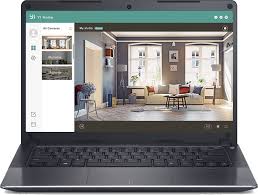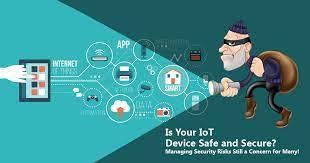What is the Internet of Things? What IoT means and how it works.
1.Introduction:
The Internet of Things, commonly abbreviated as IoT, refers to the connection of devices (other than typical fare such as computers and smartphones) to the Internet. Cars, kitchen appliances, and even heart monitors can all be connected through the IoT. And as the Internet of Things grows in the next few years, more devices will join that list.
Imagine all the devices you use in your home, from the kitchen to the living room, to the garden, to the bedroom, or even when you drive to the office.
Through the use of the IOT, all these devices can "talk" to each other, making our lives a little easier, the decisions we make are not so complicated to make since these devices we are talking about can "think" for themselves and automate certain actions.
Example:
- One of the most common examples is when we use our smartphone to change the channel on our TV via Wi-Fi. The devices are not paired at the factory, so they have to be connected to the network to be seen. That is the trick of the IOT, the network recognizes the equipment and connects them to each other according to the application we use.
- Another example that we can use regularly is to view our cameras installed in the home from our PC in the office. As in the previous case, the cameras or the DVR are connected to the Internet via Wi-Fi, so we can access their use via the web from our PC.
- The IOT is not only used in the home environment, within the industrial world it is well established, basically when it comes to automating processes and work programs. Currently there are a large number of machines managed from a computer or server, which form swarms interconnected through internet or intranet protocols. This allows work to be more efficient, accelerating and saving processes both in time and money.
2. How IOT works?
We have talked about what IOT is and we have seen a number of examples, but how does IOT work specifically and what kind of ingredients should be put in the recipe? Let's talk about it:
IoT devices have sensors embedded into them. These sensors are capable of sensing their surroundings. The devices store the information in some form of data. These devices include appliances such as mobile phones, coffee machines, microwaves, geysers, fire alarms, Air conditioners, cars and so on.
The sensors embedded in these devices constantly emit data about the surrounding and on the working information of these devices. IoT serves as a platform to dump all the data collected by these devices.
IoT platform includes cloud servers and large databases. The IoT platform acts on the data. It integrates and processes the information. Further, the platform analyses the data thoroughly to gather important details. The platform then sends back instructions based on the data provided.
Finally, the data aggregation is shared with other devices for better performance in the future. It is also done for improved user experience.
3.Components of IoT
IoT has 4 components that describe the functioning of most of the IoT systems:
A. Sensors/Devices
These devices connect with the external physical environment. They collect the data from the outside changes and store this information. A sensor senses the changes in the surroundings and notes down these changes. This property makes sensors extremely useful in IoT applications.
For example, there are sensors in your phone such as GPS which track your location and guide you to your destination. Cameras sense human movement to click pictures. Try finding out other sensors in your mobile devices.
B. Connectivity
Cloud servers process the data that sensors collect. But, in order to do so, they require platforms. Connectivity is the connection among all IoT devices in any given Iot ecosystem including sensors, routers, gateways, user applications and platforms.
Connectivity allows you to take control over the entire IoT system and hence it is crucial to select the right kind of connectivity path. Wifi, Bluetooth, Zigbee, cellular networks such as LTE or 5G all offer connectivity to transmit large amounts of data.
C. Data processing
Once the entire data transmits to the platform, functions are performed on this data in order to process the data and send back necessary outputs. In other words, data analysis must take place. This step is the most important step in IoT technologies. The analysis must happen at a quick rate to provide better results.
D. User Interface
This is the final stage. This stage is in direct contact with the user and it gives the output that users see on their screen. Every IoT device has a different interface as each device has a different task or purpose to accomplish.
4.Privacy and security concerns in IoT
The use of IOT carries several benefits, as it will change the way people carry out everyday tasks and potentially transform the world. Having a smart home is undoubtedly cool and will draw oohs and aahs from your guests, but smart lighting can actually reduce overall energy consumption and lower your electric bill.
New developments would allow connected cars to link up with smart city infrastructure to create an entirely different ecosystem for the driver, who is simply used to the traditional way of getting from Point A to Point B.
And connected healthcare devices give people a deeper and fuller look at their own health, or lack thereof, than ever before.
But with all of these benefits comes risk, as the increase in connected devices gives hackers and cyber criminals more entry points.
Late last year, a group of hackers took down a power grid in a region of western Ukraine to cause the first blackout from a cyber attack. And this is likely just the beginning, as these hackers are looking for more ways to strike critical infrastructure, such as power grids, hydroelectric dams, chemical plants, and more.
And aside from these security issues, the average consumer is concerned about his or her privacy. After all, if so much of the consumer’s life is connected, then what is off limits?
Below, we’ve compiled a list of some of the biggest IoT security and privacy issues as we head toward this truly connected world.
- Public Perception: If the IoT is ever going to truly take off, this needs to be the first problem that manufacturers address. The 2015 Icontrol State of the Smart Home study found that 44% of all Americans were “very concerned” about the possibility of their information getting stolen from their smart home, and 27% were “somewhat concerned.” With that level of worry, consumers would hesitate to purchase connected devices.
- Vulnerability to Hacking: Researchers have been able to hack into real, on-the-market devices with enough time and energy, which means hackers would likely be able to replicate their efforts. For example, a team of researchers at Microsoft and the University of Michigan found a lot of holes in the security of Samsung’s SmartThings smart home platform, and the methods were far from complex.
- Are Companies Ready?: AT&T’s Cybersecurity Insights Report surveyed more than 5,000 enterprises around the world and found that 85% of enterprises are in the process of or intend to deploy IoT devices. Yet a mere 10% of those surveyed feel confident that they could secure those devices against hackers.
- True Security: Jason Porter, AT&T’s VP of security solutions, told Insider Intelligence that securing IoT devices means more than simply securing the actual devices themselves. Companies also need to build security into software applications and network connections that link to those devices.
5. Real world examples for IOT
Insider Intelligence forecasts 3.74 billion IoT mobile connections worldwide by 2025 and more than 64 billion IoT devices installed by 2026.
To help clarify how the IoT works, we’ve laid out some real-world applications, along with some specific devices and examples.
- Smart Home: The smart home is likely the most popular IoT application at the moment because it is the one that is most affordable and readily available to consumers. From the Amazon Echo to the Nest Thermostat, there are hundreds of products on the market that users can control with their voices to make their lives more connected than ever.
- Wearables: Watches are no longer just for telling time. The Apple Watch and other smartwatches on the market have turned our wrists into smartphone holsters by enabling text messaging, phone calls, and more. And devices such as Fitbit and Jawbone have helped revolutionize the fitness world by giving people more data about their workouts.
- Smart Cities: The IoT has the potential to transform entire cities by solving real problems citizens face each day. With the proper connections and data, the Internet of Things can solve traffic congestion issues and reduce noise, crime, and pollution.
- Connected Car: These vehicles are equipped with Internet access and can share that access with others, just like connecting to a wireless network in a home or office. More vehicles are starting to come equipped with fobs in lieu of physical keys, which use sensors to do everything from remote start and setting off the alarm to popping the trunk and unlocking the vehicle with smart locks.
- Agriculture: Every day the agricultural world is becoming more and more technical. The IOT and the different connected devices interact with the environment to design crops, irrigation, satellite telemetry, livestock control, pest and disease control and a long etcetera that today is a huge market due to its size and future possibilities.
- Industry: It is well known that the world of industry is one of the most technical today. It is a fact that IOT developers have based most of their applications and programming environments on industrial automation, on protocols such as CAN (BUS-based), and TCP and IP connections. From there they migrated to create global applications that accept a multitude of devices such as those mentioned above.
6. Bibliography and sources
7. Conclusion
I have presented this blog to the public to define what the Internet of Things or IOT is, and to advocate for the correct use of technology to develop an interconnected future, more effective and that helps users to make their day more efficient. and save time and money for your own happiness and enjoyment of life.
As always, I love to communicate and debate with all the people about all my publications, so if you are interested ina a presential or virtual communication taking a cup of cofee or some tea, just connect me. My doors and mind are always open.









Comentarios
Publicar un comentario